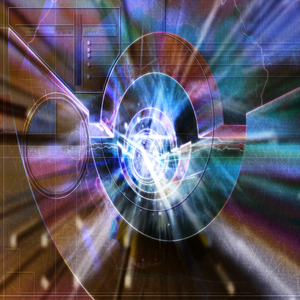Memory and Emotion

Your humble reporter has had more than his fair share of major life events. As a sixteen year old I was a passenger in car that had a meeting with another vehicle driving down the wrong side of the road. This was in England, where folk always do drive on the “wrong” side, but the fellow who was kind enough to arrange the collision could never explain why he was driving on the “American” side.
The interesting thing is that the memory of the crash is seared into my memory: I can remember the license plate of the vehicle that hit us. Some people call that a “flashbulb memory.”
If you live in the United States you probably have clear and fairly accurate memories of where you were and what you were doing on September 11th 2001.
This kind of experience is not uncommon: most of us have noticed that events that occur during heightened states of emotional arousal, such as fear, anger, happiness and sex are far more memorable than less dramatic occurrences. The emotional “load” of an event is a key factor in remembering it. Previous studies have confirmed that heightened states of emotion can facilitate learning and memory.
This makes good evolutionary sense: emotionally charged events are likely to be the ones that we need to remember. From an evolutionary perspective, it is more important to remember where Mr. Saber-tooth Tiger lives, rather than the names of the Kings and Queens of England.
Therefore the regions of the brain that are responsible for the storage of memories need to distinguish between important experiences and those that less significant for survival. The brain must have some mechanisms for giving priority to emotionally charged memories, so that they are converted and stored in long-term memory.
The downside is that in some situations, for instance posttraumatic stress disorder (PTSD), this process can become pathological and people can be tormented by persistent vivid memories of traumatic events.
Writing in the journal Cell, researchers from Johns Hopkins University and their collaborators at Cold Spring Harbor Laboratory and New York University may have identified the biological basis for this phenomenon. Memories in the brain are held in neurological circuits and each new experience creates a new circuit. The investigators have found that the hormone norepinephrine, which is released during emotional arousal, serves to “prime” nerve cells to remember events. They do this by increasing the neurons’ chemical sensitivity at the precise sites where nerves rewire to form new memory circuits.
Norepinephrine is often described as one of the “fight or flight” hormones and it is likely also involved in the third type of response to a threat, which is “freeze.” In the brain norepinephrine energizes the circuit-building process by adding phosphate molecules to a nerve cell receptor called GluR1. The phosphates help guide the receptors to insert themselves next to a synapse.
So when the emotionally-charged brain needs to form a memory, the nerves have plenty of available receptors to quickly adjust the strength of the connection and lock that memory into place.
The researchers targeted the GluR1 receptor after discovering that if it is disrupted in mice, the little creatures develop spatial memory defects. They tested the idea by either injecting healthy mice with adrenaline or exposing them to fox urine, both of which increase norepinephrine levels in the brain.
They then analyzed the brains of the mice and found increased phosphates on the GluR1 receptors and an increased ability of these receptors to be recruited to synapses.
When the researchers put mice in a cage, gave a mild shock, took them out of that cage and put them back in it the next day, mice who had received adrenaline or fox urine were likely to “freeze” in fear, compared with mice who had not been exposed to the adrenaline or fox pee. This implies an enhancement of their memory of the cage and its unpleasant associations.
In a similar experiment with mice genetically engineered to have a defective GluR1 receptor, adrenaline injections had no effect on mouse memory. So this provides us with further evidence of the “priming” effect of norepinephrine on the receptor.
There has been a lot of recent interest in using medications like beta-adrenoreceptor blocker propranolol – which prevents some of the actions of norepinephrine – to prevent the development of PTSD in people who have been exposed to extreme trauma, and this research may provide the scientific basis for this kind of therapy.
On the other hand, this research leads me to predict that people with overactive GluR1 receptors may be constantly curious about their environment, but also likely to be chronically anxious and more likely to develop PTSD.
We have known for years that propranolol and other beta-blockers may attenuate some of the physical symptoms associated with anxiety. Most people had assumed that the medicine worked by reducing heart rate, shaking and sweating. But experienced clinicians usually find that beta blockers that cross the blood/brain barrier work best, and it may well be that these drugs also have direct actions in the brain itself.
“Recollection is the only paradise from which we cannot be turned out.”
–John Paul (a.k.a. Johann Paul Friedrich Richter, German Novelist and Humorist, 1763-1825)
“The existence of forgetting has never been proved: We only know that some things don’t come to mind when we want them.”
–Friedrich Wilhelm Nietzsche (German Philosopher, 1844-1900)
“The moment we find the reason behind an emotion … the wall is breached, and the positive memories it has kept from us return too. That’s why it pays to ask those painful questions. The answers can set you free.”
–Gloria Steinem (American Feminist, Political Activist and Editor, 1934-)






